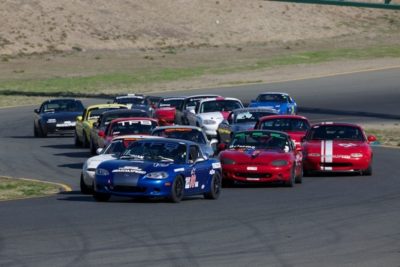An update on Spec Miata Intent, Direction and regulations.
TO: Spec Miata Participants
FR: SCCA, NASA, Mazda Motorsports, and the Spec Miata Working Group
RE: Class Intent, Direction and Regulations
DT: November 14, 2014
In the spirit of open communication, we wanted to update you with where we are at in the process layed out in last week’s memo to the SM community. Additionally, we have been asked to share more details regarding what the working group of industry experts uncovered in Topeka, Kansas, where the non-compliant cylinder heads are stored, during the investigation into the illegally modified cylinder heads protested at the 2014 SCCA Runoffs; below we shed a little more light. Thank you to all of those who have spent the time sharing their thoughts with us.
As a reminder:
The Spec Miata (SM) class is intended to provide the membership with the opportunity to compete in low cost, production-based cars with limited modifications, suitable for racing competition.
The rules are intentionally designed to be more open than the Showroom Stock class but more restricted than the Improved Touring class.
The working group that visited Topeka discovered that there was a variance in the amount of smoothing, blending and porting of the sharp edge from the plunge cut among the illegal heads; some were egregious – a clear violation of the rules in an attempt to gain a competitive advantage. Others were less severe, but still a violation of the rule. Some have suggested that we should adjust the rule in order to allow for a certain level of blending and porting. In keeping with the intent and integrity of the class, NASA and the SCCA, with council from Mazda, determined that would not be the best course for the class. It would increase costs for the competitors who have not violated the rules and for the future entrants of the class; this is in direct contradiction of the spirit of this class, which we desire to keep costs manageable and to have a fair and level playing field.
A challenge we are presented with is that there are competitors who have plunge cuts that had engine builders who de-burred and smoothed the sharp edge in their belief of practicing “good clean-up.” This is inevitably an issue that the plunge cut provides, along with additional costs to perform, and to measure or tech. As a result, returning to stock cylinder heads is ultimately the goal and in alignment with the intent of this class.
Many of those who have compliant cylinder heads, per the rule set, have asked a very fair question of why they may receive a weight adjustment. First, please know that if weight adjustments are given, this adjustment would not be punitive; the weight adjustments, if any, would be targeted to offset the advantage in horsepower of the plunge cut over a stock head – to equalize them. The benefits of the weight adjustment to the class would be as follows:
- It will allow all racers with currently compliant heads to continue to race those engines.
- It will encourage anyone building a new engine to use a stock head, rather than spend money on performance increases that would be neutralized with additional weight.
- It will also give racers who currently race with stock heads an equal chance against engines with legally performed plunge cut heads.
Recognizing the number of modified cylinder heads in the community (both compliant and non-compliant), the expense to replace these and the potential parts availability concern, the working group agreed to have an independent, third party test and determine the effect of the individual and collective modifications; this process is underway.
The testing group is currently gathering various cylinder heads and engines. The group will flow test heads first, then run all heads on the same engine, then do the same exercise again with another engine. The testing group will dyno various cylinder heads to determine what horsepower advantages the modifications have, ranging from those egregious to the compliant, compared to one another and to stock heads. These findings will be shared with SCCA, NASA, and Mazda and in turn be shared with the entire Spec Miata community.
Using these data, the weight adjustments, if any, will be determined and outlined during the December 14 SCCA Board of Directors meeting, in conjunction with NASA’s determination. NASA, SCCA, and Mazda are working together to help make the right decision for the good of the class – one where members will have the opportunity to compete in low-cost, production-based cars with limited modifications, suitable for racing competition.
As always, we appreciate your support.


 ACCESSIBILITY
ACCESSIBILITY